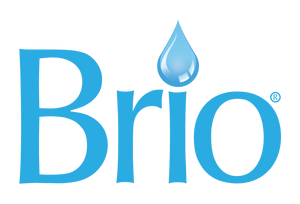People switch to filtered water for many reasons, including the positive environmental impact, cost savings, contaminant removal, and better taste. If you want to enjoy these benefits, you may wonder about your options.
A quick search can bring up many solutions. There are whole-house filtration systems, under-the-sink filtration solutions, tankless reverse osmosis options, and more. If you’re leaning toward a reverse osmosis water filter system, this guide covers the pros and cons.
What is Reverse Osmosis?

Reverse osmosis (RO) is a process that purifies water via pressure and a semi-permeable membrane. This filtration method can block particles as small as .0001 microns. As the water passes through a reverse osmosis water filter, it removes contaminants and larger molecules. The resulting stream of filtered water is called permeate. In contrast, the rejected water is referred to as brine or concentrate. A point-of-use RO system is connected to a cold water supply, a waste drain, and a dedicated faucet.
If you’re leaning toward this type of filtration system, you must have a more specific water filtration goal. A home water test can help you determine if a reverse osmosis system is best for your application based on what you aim to remove. However, you’ll also want to consider the pros and cons, including the following.
The Pros of a Reverse Osmosis Filtration System
Consider the following advantages when choosing a reverse osmosis water filter system.
1. Improved Taste and Smell

If you are used to your municipal tap water, you will immediately notice that RO-filtered water has a refreshing, crisp taste. Since impurities are removed, you’ll likely also notice an improvement in odor — especially if chlorine levels are high. The CDC suggests that you research the reverse osmosis filter before you buy it to ensure it will remove the specific chemicals you want to remove from your water.
2. Contaminant Removal

An RO system can be ideal if you want cleaner, healthier water on demand. Reverse osmosis water filters are effective at removing contaminants, such as lead or arsenic. Again, you will want to test your water to identify the main issues, so you know what to target.
Investing in an advanced reverse osmosis water filter system can instantly remove dirt, rust, sand, iron, chlorine, cysts, salts, volatile organic compounds, total dissolved solids, and heavy metals like lead and arsenic. These advanced smart systems can even show the level of total dissolved solids in RO water as it is dispensed — like calcium, magnesium, potassium, sodium, organic matter, and nitrates.
3. Eliminates the Need for Bottled Water

If your household purchases bottled water, an RO system can help you reduce your expenses while benefiting the environment. However, other options exist to eliminate single-use plastic water bottles from your grocery bill, like bottled and bottleless coolers. The best option for you will depend on your circumstances. A reverse osmosis filtration system may be the best choice if you want to achieve cost savings and have a more positive environmental impact.
The Cons of a Reverse Osmosis Filtration System
 Here are some disadvantages of a reverse osmosis water filter system.
Here are some disadvantages of a reverse osmosis water filter system.
1. These Systems Can Create High Volumes of Wastewater
Depending on your system, inefficiencies can be an issue, resulting in more wastewater than many anticipate. The EPA reported that a typical point-of-use RO filtration system rejects an average of five gallons of concentrate for every gallon of treated water produced. That number sometimes increases to ten gallons of concentrate for every gallon of treated water.
2. Can Lack Minerals That Users Want
A reverse osmosis system will remove all minerals. So, while a reverse osmosis system is beneficial to eliminate impurities, if people only drink RO water, they could experience a mineral deficiency. Calcium and magnesium are two minerals you’ll want in your everyday diet, so a re-mineralization solution is recommended.
3. There Are Installation and Maintenance Costs
Depending on the system, you may have upfront costs for the installation process and costs to maintain your system. The complexity and cost of the installation process will vary based on the system size and plumbing situation. However, some options take as little as 30 minutes to install, like the Brio PRISM Tankless RO Undersink Filtration System 600 GPD.
Concerning maintenance, you will need to replace filters, and you may need to check for leaks over time. Sediment and carbon filters must be switched out every 6-12 months, and the membrane should be replaced every 1-2 years. It is worth checking if the system you purchase comes with your first set of filters.
Choose an RO System That's Right for You
 Ready to explore the reverse osmosis systems available? Brio has an extensive collection of top-quality and smart tankless reverse osmosis systems. These filtration systems are powerful, space-saving, and customizable. Check out Brio’s collection of AQUUS, PRISM, and G20 systems today!
Ready to explore the reverse osmosis systems available? Brio has an extensive collection of top-quality and smart tankless reverse osmosis systems. These filtration systems are powerful, space-saving, and customizable. Check out Brio’s collection of AQUUS, PRISM, and G20 systems today!




